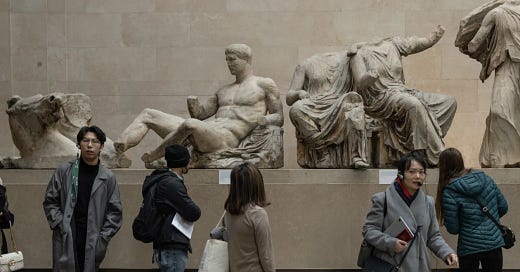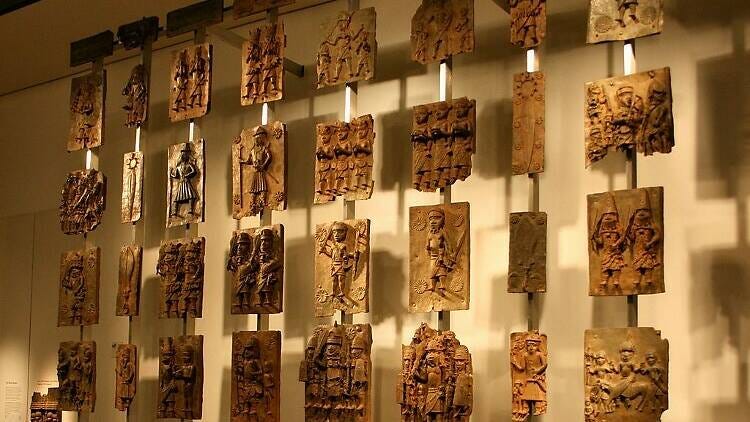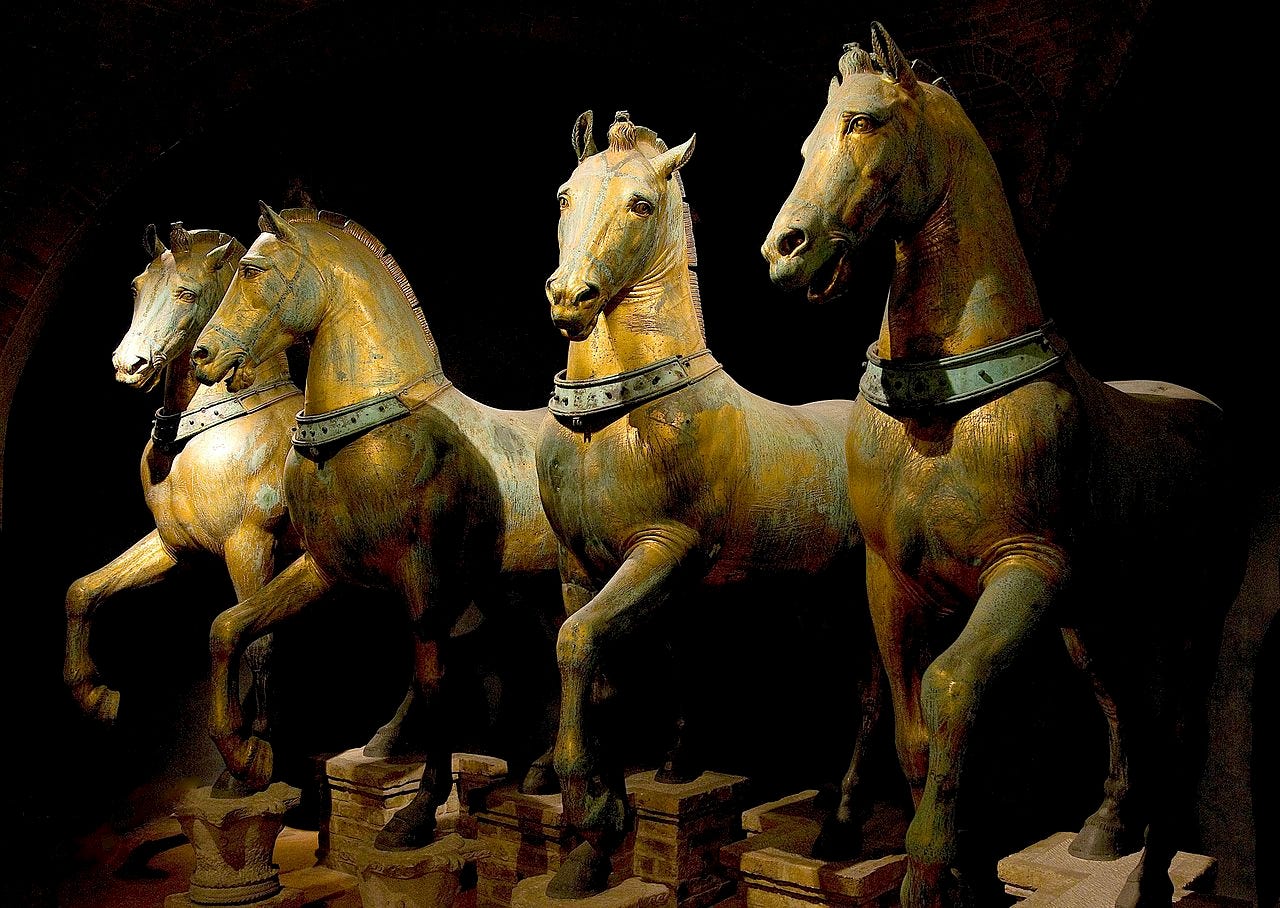(Again, disclaimer – my viewpoint as an American only! I understand and will publish any differing opinions. Drop me a note.)
The reparation of art is a difficult subject for a lot of reasons. Let’s look at it. Many museums (and even more private individuals) are under a lot of pressure to return artifacts to local countries where they were found. A simple solution would be to return those items that were illegally obtained. But what if the artifacts were purchased legally at the time.
Example 1 – The Parthenon / Elgin Marbles at the British Museum.
The Elgin Marbles / Parthenon Marbles is a great example of the problems inherent in resolving these issues. The Parthenon in Athens is a wonder of engineering and beauty from the 5th Century BC, created by the Greeks. The Marbles were removed by British Lord Elgin, and years later sold the British Museum.
Historically, the Marbles were available because the Parthenon was weakened by earthquakes, and nearly destroyed by a Venetian attack on the Ottoman Empire (who controlled Greece at the time). The Ottoman’s were using the Parthenon as a fortress, and had stored gunpowder there. A Venetian attack hit the gunpowder storage and completed the near destruction of the Parthenon. For the next 100 years, locals had taken various pieces of the Parthenon and looted the remaining art of value and was light enough to carry off.
In 1801 – 1812, Lord Elgin removed the Marbles. Per Lord Elgin’s story, he had permission and paid for the Marbles. In 1816, a British review board found them to be removed legally. So from this perspective, the Parthenon Marbles were obtained legally. Lord Elgin got permission from the Ottoman Empire, the legal government of the time.
The Greek government’s position is that the Marbles couldn’t be sold or taken by the Ottoman Empire, they were Greek treasures. But there was no Greek country in 1800, when the Ottomans were rulers of Greece.
Since 1983, the Greek government has demanded the Marbles be sent from the British Museum back to Greece – but not to Turkey, the successor government of the Ottoman Empire. It is a complicated question. Many of us outside of England think the obvious answer is to send them back to Greece. Because Greece has a museum for the Parthenon, and the tourist interest is strong.
Before we blithely answer if the Marbles should be at the British Museum or displayed at the Parthenon in Greece, we should look at a similar issue with the Benin Bronzes.
Example 2: The Return of the Benin Bronzes
In 2022 several museums, including the US National Gallery of Art, Smithsonian Museum of African Art in DC and the British Museum, returned the “Benin Bronzes” to Nigeria. These bronzes were part of the Benin Empire art and riches that were taken by the British. These were obtained when the British attacked the Capital of Benin, then an independent Kingdom. (This Benin Empire is far from the current country of Benin.) The British then absorbed the Benin region into their colony of Nigeria. This occurred in 1897. The famous Bronzes were displayed in British Museums and sold to other museums around the world.
Nearly all of these have been transferred back to Nigeria at their request – although many continue to be displayed at foreign museums on loan.
Why were the Bronzes returned, but the Parthenon Marbles have not been?
Given the questions around the Elgin Marbles, what are the differences between the two situations; why return the bronzes, but not the marbles?
You might say the Bronzes must be returned because the British attacked a country and stole them. But that same reasoning could be applied to the Ottomans when they took Greece. If the British legally purchased the Marbles from the Ottoman Empire, can’t you say the Americans legally purchased the Benin Bronzes from the British?
Is the difference is due to how recently they were taken? Is 1897 – when the bronzes were taken - not long enough to be legal, but 1812 – when the Marbles were taken by Elgin - is long enough ago to be legal? Why does Nigeria have a right to these? They were from the Benin Empire, which was later absorbed into the country of Nigeria. If their return is based on a geographic relationship to the land where they were created, why aren’t the Marbles returned to Greece?
Other Considerations
One of the most relatable excuses for keeping the artistic treasures of other countries is that they are on view to millions of more people than they would in their home countries. Millions more people could see the bronzes at the British Museum or the Smithsonian than can now in Nigeria. It is an understandable argument, but only from a Western viewpoint. From Nigeria’s point of view, many more Nigerians will see them in Nigerian Museums than in the British Museum or the Smithsonian.
Under the argument of viewership, the Benin Bronzes should not be returned, but the Parthenon Marbles should be.
But if the Parthenon Marbles should be returned, should all Greek and Roman / statues be returned to Greece and Italy from around the world? Should Italy be required to return the Horses of Saint Mark to Türkiye? After all, the horse were stolen by the Republic of Venice, now Italy, from the city of Constantinople during the Byzantine Empire’s rule – before the Ottomans or the establishment of Türkiye.
This isn’t a “slippery slope’’ argument. Many of these questions are being considered by Museums and countries around the world. I don’t think there is an easy answer - although I do think the Parthenon Marbles should go back.





